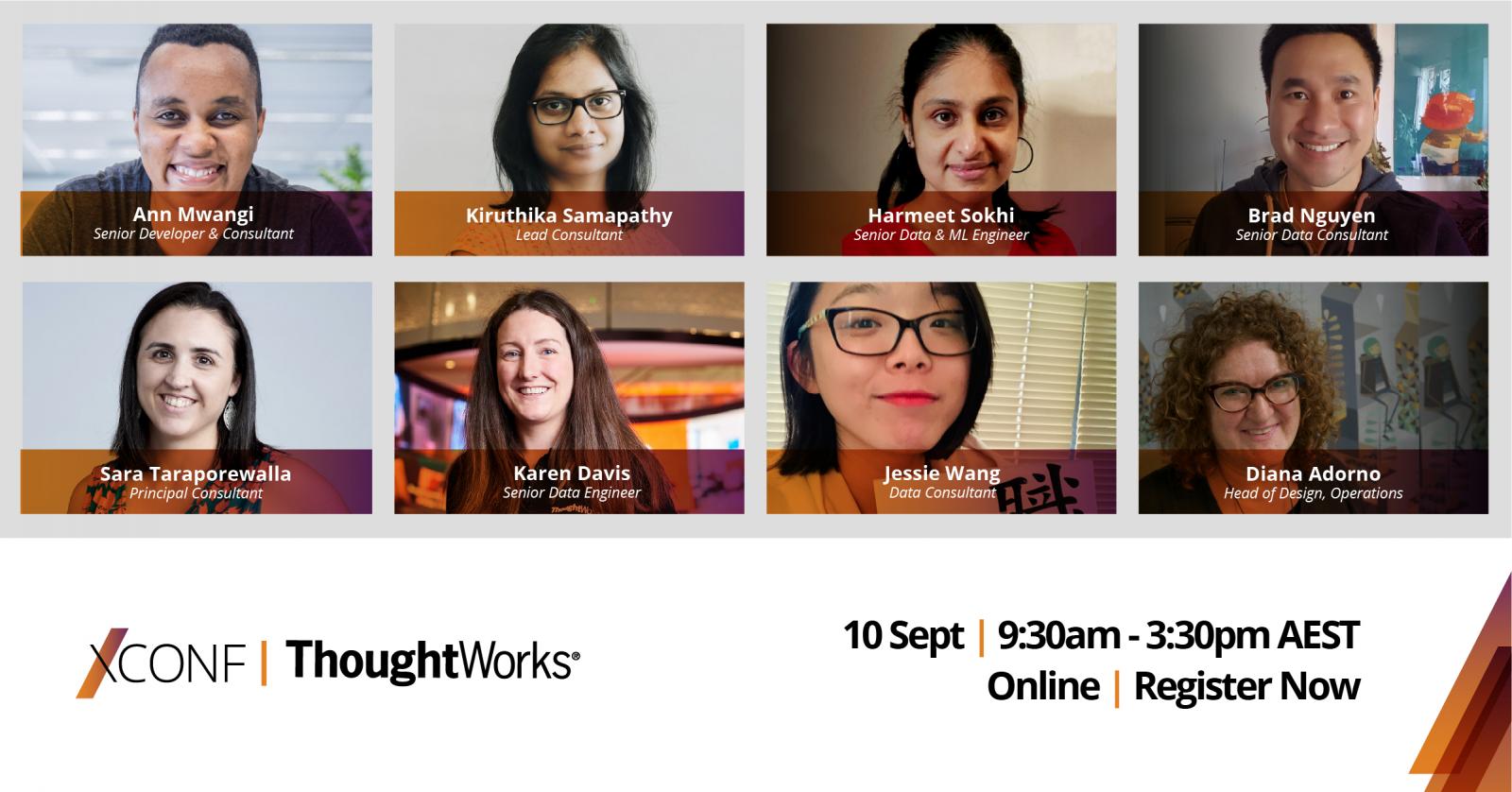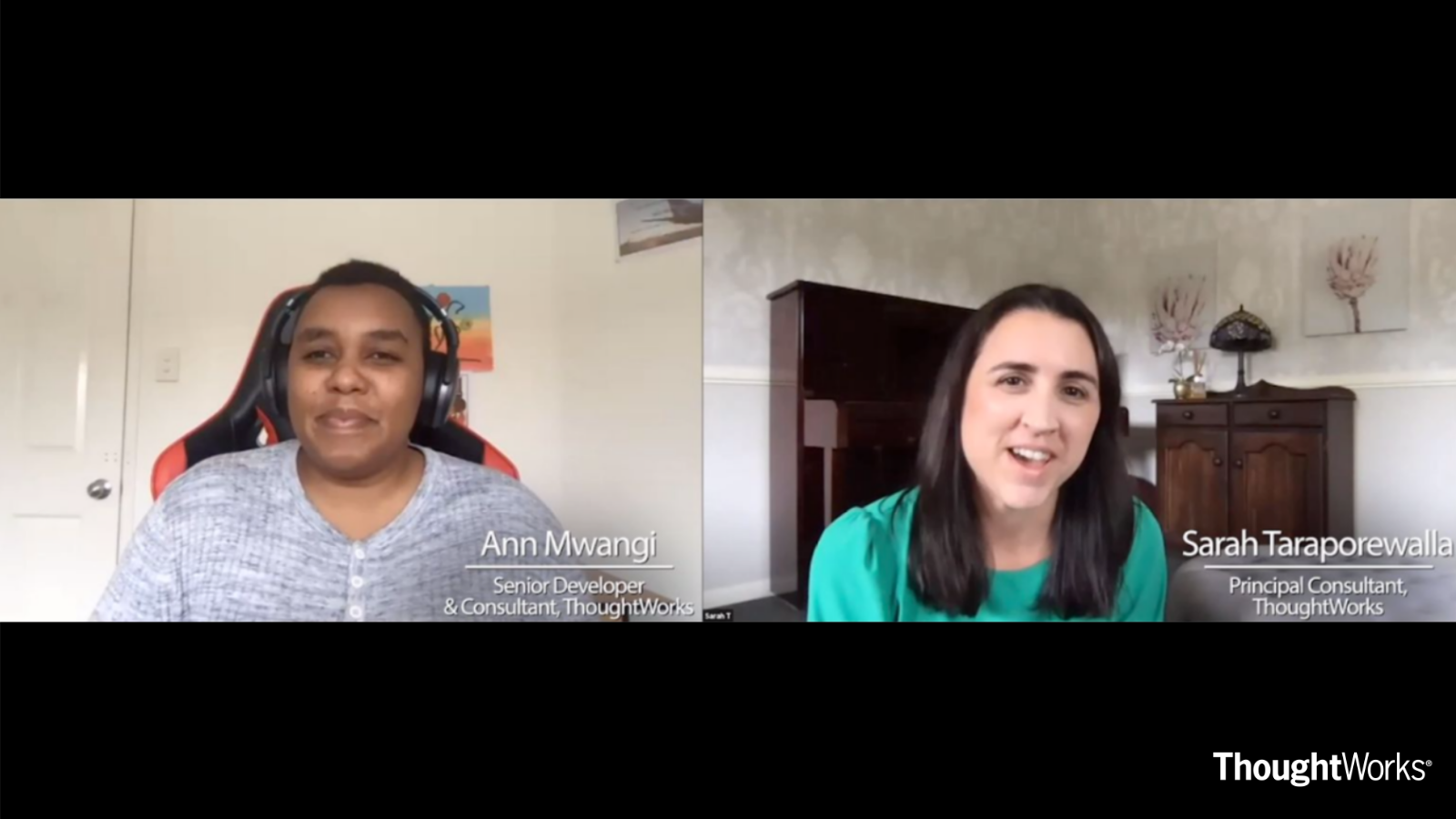
The commitment: Bringing diverse voices to tech conferences

The lineup contained just as many technical, experienced presenters as other conferences, but with one significant difference - the majority of these experts happen to be women. Interested in how we pulled it off? As one of the organisers of XConf, let me tell you our little secret.
Like any good article written in the year that wasn’t, I have to make mention of a little thing called “COVID-19”. As you can imagine, that little virus threw a spanner in our annual event. For the first time, we had planned to bring the conference to all three Thoughtworks Australia cities (Brisbane represent!). Our travelling act would have spanned three weeks, and seen our speakers on the road for the majority of that time. As it happened, most of our speakers are parents. I’ve written previously about the difficulty of being a parent and travelling to present at conferences. Moving to an online conference removed those problems, and certainly made life easier for our presenters who are parents.
So how exactly did we get that lineup of speakers? Well, that all starts with the selection process.
Blind selection process
The XConf Program Committee blind voted on the proposals. They saw the title and the description but none of the speakers’ names. Each proposal was grouped by topic (Event Driven Architecture, Machine Learning, Data etc). We knew the rough shape of the day we were after, so the grouping helped us select the most relevant proposals for each topic. There were no restrictions on the votes - one could vote for all the topics. The voting was private - we individually filled in the Google Form.Once the votes were tallied, the best-ranked talk for each topic was pulled into our program (still blind). We had a look to see if we liked the story narrative. Only then did we add names. Once we added the names we looked for other attributes, like the experience of the presenter, gender diversity and city diversity of the overall program. We wanted to find the right balance of speakers and content overall.
So how did we manage to line up so many speakers who traditionally are under-represented in the tech community? Well, that all starts with the open Call for Proposals (CFP).
Open CFP process
The CFP process is used by many conferences. Like many others, we invited everyone to submit a talk and had a simple form including the title, description and presenter name to capture just enough detail. In the call-out, we made explicit mention of our goals, one of which being:
Goal 1: Have diverse representation
We’d like to see a good number of talks submitted by people from groups who are traditionally under-represented in the tech community. We value diversity not only because of our firm belief that it is the right thing to do, but also because our organizational culture, our clients, and our industry benefit from the backgrounds, experiences, and perspectives of people from all walks of life.
We also included the support channels that were available to everyone.
We have:
• Your Mentor who can help you work out where your strengths are, what unique perspective you can add to one of these problems.
• A great support network in the form of a dedicated chat channel for people interested in speaking at conferences.
• Support from our dedicated Luminary Support role who can help guide you through topic ideation and proposal writing.
• Dedicated mentor chosen from a pool of senior, experienced conference speakers who can help you develop your (accepted) XConf talk into a polished, professional presentation.
Don't want to go it alone? Pair Presenters work too.

During the CFP, the XConf Program Committee encouraged, inspired and cajoled many people to submit proposals based on their hands-on experience. We found more experienced presenters who could pair with those with less experience, but with a great story to tell. We also had experienced presenters give ideas to other presenters, with the promise to help them with the presentation if needed.
But we have to go further back, because this story actually starts with the selection of the Program Committee.
Diverse program committee
The Program Committee represented the type of diverse program we wanted. If one of our goals for the conference was for equal gender representation, our committee also needed to have equal representation. Additionally, each member needed to know what makes for a good technical talk and be someone who can make a fair and objective assessment of potential.
Was forming a diverse program committee difficult? No! It is pretty easy to select these diverse experts when your organization (and therefore talent pool) has equal representation at most levels (we’re still working on our principals and directors).
That story starts 10 years ago, with our introduction of gender hiring quotas.
Equal representation
In 2009, we introduced gender recruitment quotas in our hiring process at Thoughtworks Australia (these are still in place today). We aimed to hire equal numbers of male and female employees because we believe that good intentions are not enough to redress the massive gender imbalance in technology. We started with our graduate level candidates (who we sourced from more than IT Degrees). After the success of the grad quotas, we introduced them to other grades. We also continued to foster, support and grow all the candidates on their career journey. We have written about that many times over the years and last year). We have also been recognised as Employer of Choice for Gender Equality for the eighth time.
And that all starts with a commitment.
The commitment
The commitment to reflect the diverse world we live in within the walls of our company. To value diversity, and strive for equal representation. To take the necessary steps and sign up to the long term plan.
2020 was not the first year we set a goal for equal representation. It was the first time that we exceeded it. It was not one thing that led us here, but a culmination of many conscious decisions, made over several years, woven into our culture, all working towards the shared goal.
Disclaimer: The statements and opinions expressed in this article are those of the author(s) and do not necessarily reflect the positions of Thoughtworks.









